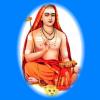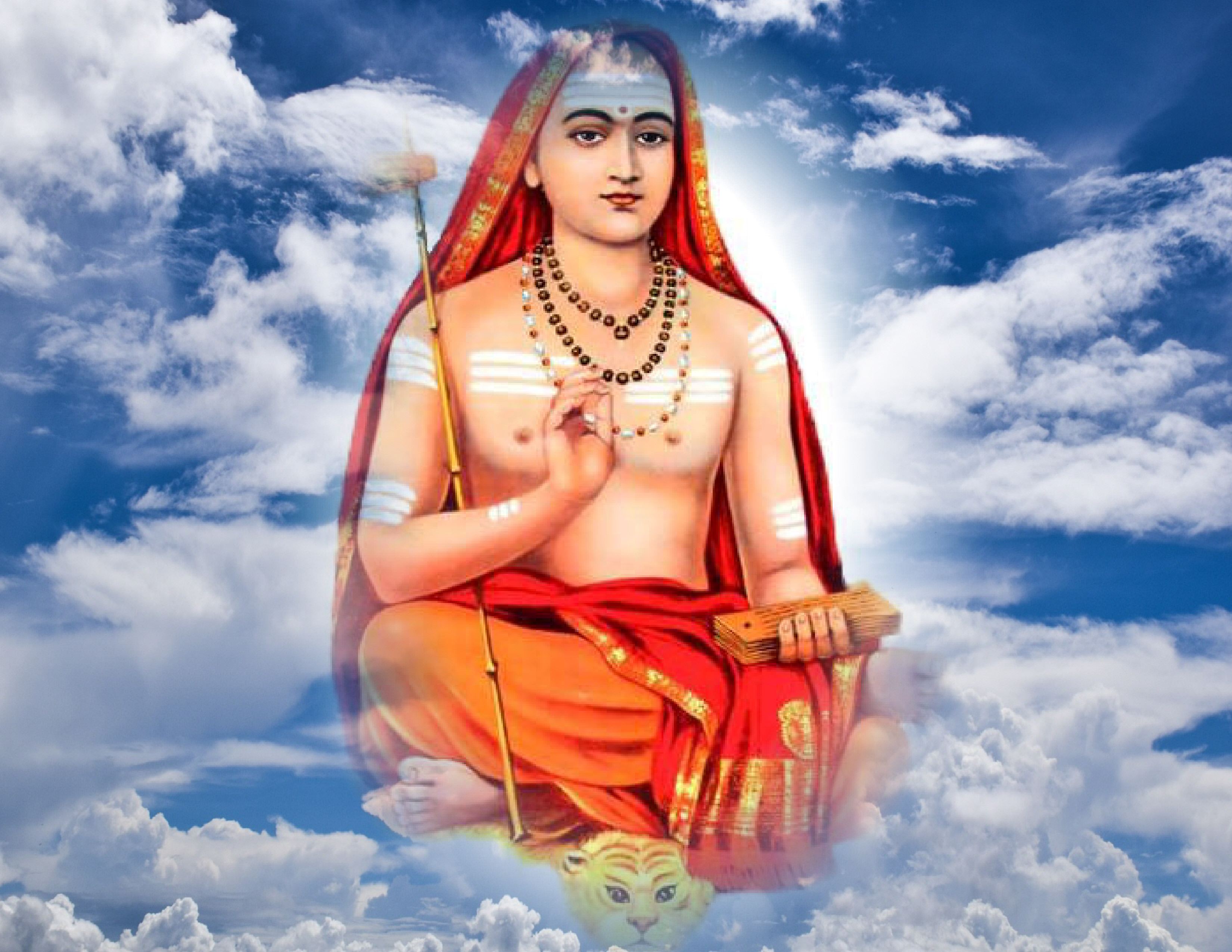 Submitted by Adi on
Submitted by Adi on

derivativeimages
Where do we begin to describe someone who accomplished so much in such a short 32 year lifetime?
Adi Shankara, also known as Shankaracharya, is a remarkable Saint who gives a new meaning to the word “efficiency.”
He advanced the philosophy of Advaita Vedanta, was a distinguished teacher, developed exceptional disciples, organized the Ten Orders of Sannyasa which are still in existence today, and wrote profound spiritual hymns for all of the deities!
A single thread of Dharma (His ideal of perfection) weaved through all of His actions, keeping Him focused on advancing Hinduism as He paved the way for the rest of us.
Whether we realize it or not, this great Sage has touched each and every one of us.
Shankarachya as an Enlightened Philosopher propounded Advaita Vedanta Philosophy. The core of Advaita Vedanta is the recognition of the unity of the Atman (the individual soul) with Brahman (the Supreme Divine Consciousness beyond all attributes). Shankaracharya was the first to consolidate the siddhānta (the “doctrine”) of Advaita Vedanta.
The word “advaita” means non-duality or no duality, and is often called a monistic system of thought.
It essentially refers to the identity of the Self or Soul (Atman) with the Whole of Creation, or the Universal Consciousness (Brahman).
Advaita Vedanta says that the one Unchanging Entity (Brahman) alone exists as the one reality and that changing entities do not have absolute existence.
The world changes. Therefore, it is not Truth. It is an illusion of Truth. Just as when seeing a coiled rope, we mistakenly feel a sense of apprehension thinking that it may be a snake. In the same way, when we see the material world, we mistake it for reality.
When we realize that the rope is actually not a snake, we feel reprieve. In the same way, when we see that the material world is not Eternal, we realize God.
Shankaracharya as an Inspiring Leader conducted a Dig-vijaya (“tour of conquest”) for the propagation of Advaita Philosophy by debating all philosophies opposed to it.
He travelled throughout India, from South India to Kashmir and Nepal, preaching to the local populace and debating philosophy with Hindu, Buddhist, and other scholars and monks along the way.
Often He debated with the provision that the loser of the debates would become the disciple of the victor!
Of course, Shankaracharya won all the debates, because every religious philosopher was bound to agree with His initial thesis:
“Brahma satyam jagat mithyā, jīvo brahmaiva nā parah”
“God is the only truth, and the world which is perceived in time and space is false, an illusion, because it keeps on changing.
There is ultimately no difference between Brahman, the Supreme Divinity, and Atman, the individual soul.”
Once He could gain agreement to this initial thesis, all further debate was rendered useless discussion about transient phenomena in a temporary world of manifested existence, because only God is the Enduring Truth.
In this way He gathered His disciples, most prominent amongst which was: Hastāmalakācārya, Sureśvarācārya, Padmapādācārya, and Totakācārya.
This is much the same as the ocean’s waves, which have no existence separate from the ocean.
Advaita Vedanta can be summed up in this simple, yet sacred wisdom:
established monasteries in the North, South, East and West of India, all promoting this one principle teaching of Vedanta.
In the North He established Jyotirmatha Pītham under the direction of Totakācārya.
In the South He established Śārada Pītham under the direction of Sureśvarācārya.
In the East He established Govardhana Pītham under the direction of Hastāmalakācārya.
In the West He established Dvāraka Pītham under the direction of Padmapādācārya.
In doing so, He united all of India and infused it with Sanskrit culture.
Shankaracharya as a Distinguished Teacher proclaimed that from the four Vedas came forth four Mahāvākyas, which are simple statements that explain the True Knowledge of non-duality:
• From the Rig Veda: “Prajnanam Brahma” – The Wisdom of Nature is God
• From the Yajur Veda: “Tattvamasi” – That is You
• From the Atharva Veda: “Ayamatma Brahma” – This Soul is God
• From the Sama Veda: “Aham Brahmasmi” – I am the Supreme Divinity
He authored devotional hymns to many of the Hindu deities, even while demonstrating devotion to His family. In order to promote unity among the various Hindu sects of those times, He wrote stotrams for each of the prime deities: Shiva, Shakti, Vishnu, Ganesh, and Surya.
The idea was that if you believe in God, you could chant any stotram, recognizing that Divinity resides in every form. Most of His songs were full of devotion to the principles of Vedanta and filled with humility and love for God:
“I am not the mind, nor the intellect, neither the ego nor the perceptions of Consciousness. I have no friend nor any comrade, neither a guru nor a disciple. I am the form of the Bliss of Consciousness, I am Shiva, I am Shiva.”
“I know nothing about meritorious behavior, nothing about spiritual pilgrimages, nothing about liberation, dissolution or any such matters. I know nothing about devotion, worship, or dedication to the Divine Mother. But Oh Divine Mother, you are my sole support, you are my sole support, and I take refuge in you alone.”
Shankaracharya wrote the Vivekacūdāmani, Prasthanatrayi, which are Bhashyas, or commentaries, on the ten major Upanishads, the Brahma Sutras, and the Bhagavad Gita.
In addition, He wrote famous devotional compositions such as Bhaja Govindam, in praise of Lord Krishna, a form of Vishnu; the Shivanandalahari, a devotional hymn in praise of Lord Shiva; the Soundarya Lahari, Gurustotram, Ganesha Pancharathnam, Lalitha Pancharathnam, Upadeśasāhasrī, and commentaries on various scriptures.
Shankaracharya as an Efficient Organizer, established the orders of Dasnami Sannyasis (ten orders of Sannyasa), according to the differing attributes of the various tribes:
1. Bharati – Full of Light
2. Giri – Live in the Mountains
3. Puri – Live in Cities
4. Saraswati – Scholars
5. Van – Live in Forests
6. Arañya – Live in Groves
7. Tirtha – Live in Pilgrimage Places
8. Parvat – Live in the High Mountains
9. Sagar – Live at the Ocean
10. Nath – Defenders of the Faith
Read more @ http://www.shreemaa.org/sri-adi-shankara-shankaracharya-2/
- 1698 reads